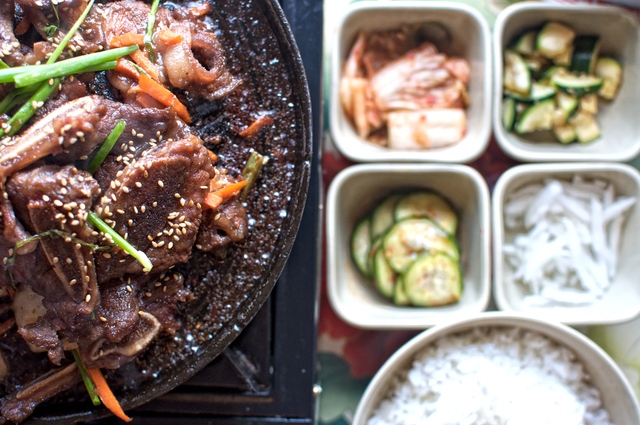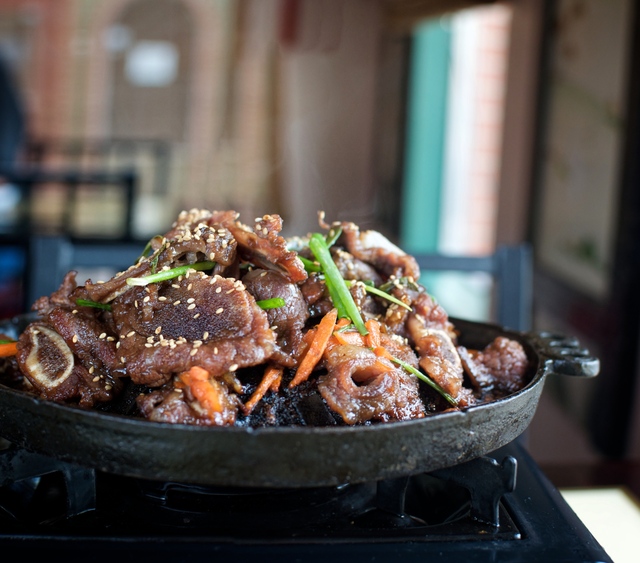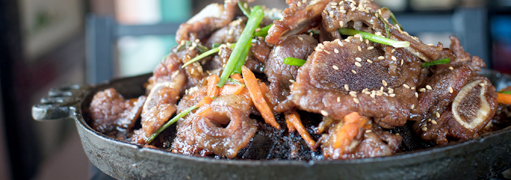Restaurant Review: Fu Yuang Makes Korean Flavors With Care
Korean Flavors Made With Care


Bulkalbi —a pile of thin-sliced, bone-in marinated ribs—is served sizzling on a tabletop hibachi.
Sergio Salvador salvadorphoto.com

Sergio Salvador salvadorphoto.com









